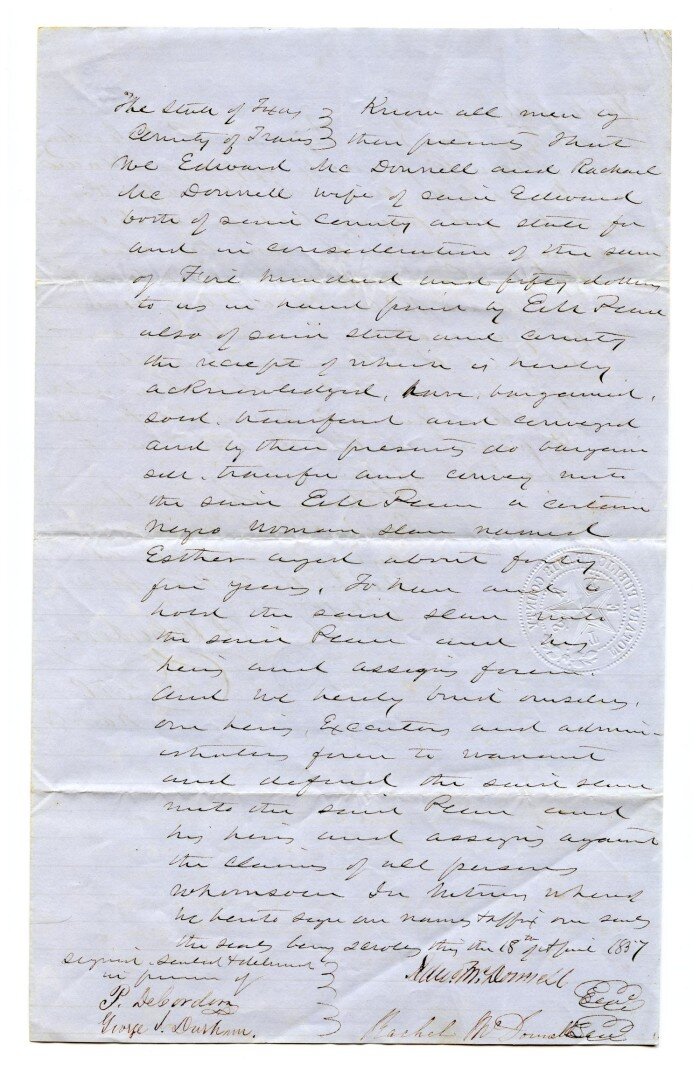Pease Park is emblematic of racial and economic injustice in Austin, and presents an opportunity to acknowledge this history of slavery, segregation, and exclusion in order to create a public space that is truly welcoming to all.
Pease Park was once part of Woodlawn, a 365-acre plantation owned by former Governor Elisha Marshall Pease and his wife, Lucadia Pease. Woodlawn included the family residence, which came to be known as the Pease Mansion. Elisha Pease was an enslaver, and enslaved people lived and labored on this land.
Woodlawn - Pease Mansion circa 1937
Census records show that ten enslaved people, between the ages of nine and sixty years old, lived on the Woodlawn property in 1860. However, historical documents trace the presence of enslaved people on this land to decades before the Civil War.
Receipt for the transport of “the Negro girl Emily and child”. September 15, 1853.
Contract for the “purchase” of Esther, June 18, 1837
While we may never know the names and histories of them all, today we wish to acknowledge and honor some of the people who have been identified as having been enslaved on this land.
Esther, age 45, enslaved June 18, 1837
Celia, age unknown, enslaved August 3, 1841
Tom or Tim, age 34, enslaved September 1, 1849
Emily and child, ages unknown, transported from Galveston to Austin, September 15, 1853
Maria, age 13, enslaved December 10, 1853
Mary Ann, age unknown, enslaved May 5, 1856
Beyond today, and beyond Black History Month, Pease Park Conservancy is committed to working with Black community organizations and individuals to co-create and build a contemplative space that allows park users to stand in witness to this landscape’s historic connections to enslavement. Such a contemplative space is a component of the Pease Park Interpretive Plan, which was developed by the Conservancy in partnership with the City of Austin Parks & Recreation Department to ensure that the park is inclusive of and welcoming to all.
Implementation of the Interpretive Plan is not just about providing information. Interpretation seeks to relate the information being displayed to something within the emotions or experiences of our park visitors. Implementation includes deeper community engagement, stronger programs, and offering authentic encounters with cultural, natural, and historic resources. If you are interested in being a part of this effort, please contact us at info@peasepark.org
This is the first in a Black History Month series to acknowledge and recognize Black Austinites who were/are integral to the history of Pease Park and its surroundings.




